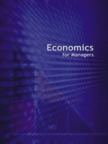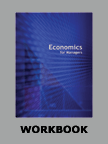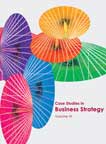The Indian Pharma Industry under the Product Patent Regime
|
|
ICMR HOME | Case Studies Collection
Case Details:
Case Code : BSTR169
Case Length : 26 Pages
Period : 1990-2005
Organization : -
Pub Date : 2005
Teaching Note :Not Available
Countries : India
Industry : Pharmaceutical
To download The Indian Pharma Industry under the Product Patent Regime case study (Case Code:
BSTR169) click on the button below, and select the case from the list of available cases:

OR

Buy With PayPal
|
Price:
For delivery in electronic format: Rs. 700;
For delivery through courier (within India): Rs. 700 + Shipping & Handling Charges extra
» Business Strategy Case Studies
» Case Studies Collection
» Business Strategy Short Case Studies
» View Detailed Pricing Info
» How To Order This Case
» Business Case Studies
» Case Studies by Area
» Case Studies by Industry
» Case Studies by Company
Please note:
This case study was compiled from published sources, and is intended to be used as a basis for class discussion. It is not intended to illustrate either effective or ineffective handling of a management situation. Nor is it a primary information source.
Chat with us

Please leave your feedback

|
|




<< Previous
Excerpts
Role of Government
Regulations in the Industry
|
Regulation in the pharma industry relates to the areas of patenting, price and
product quality. The Indian Patent Act of 1970 provided a process patent for 5-7
years, while in the US and Europe product patents of 15-20 years were the norm.
The Indian Patent Act of 1970 was amended first in 1999.
As part of the amendment, a provision was made for Exclusive Marketing Rights (EMR)
, with retrospective effect from January 1, 1995. The amendment provided a
mechanism for accepting product patent applications and for examining and
granting EMRs till the time the country changed to product patent norms...
|

|
Research and Development
In the 1990s, India was a source base for intermediates and
was used as a centre for conducting low cost clinical trials. In the 2000s, the
country has moved up the value chain and Indian firms are tying up with foreign
pharma giants for collaborative R&D work at the pre clinical stage. In 2001-02, clinical research was a Rs 3 billion market and it is expected to reach Rs 40 billion by 2010. The cost of trials in India varies from 20 to 60% of the cost of trials in Europe/US. India provides world class skills in chemistry and process development in addition to its cost competitive manufacturing base...
|
|
Issues affecting the Industry
India's per capita expenditure on healthcare was
among the lowest in the world in 2003 (Refer Exhibit XII). The presence
of counterfeit drugs also posed a major problem. Even with the use of
holograms by large companies to protect their products, in 2004,
counterfeit products had a 15% share of India's pharma market.
The implementation of Value Added Tax (VAT) from April 1, 2005 met with
protests from pharma dealers as their demand that GoI collect VAT from
the manufacturers instead of collecting VAT at every point of sale, was
not met by the GoI. |
The pharma dealers were classified into three categories based on the varied tax rates they had to pay...
Excerpts Contd... >>
|










